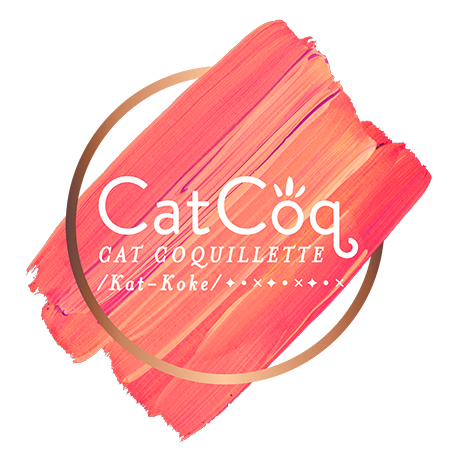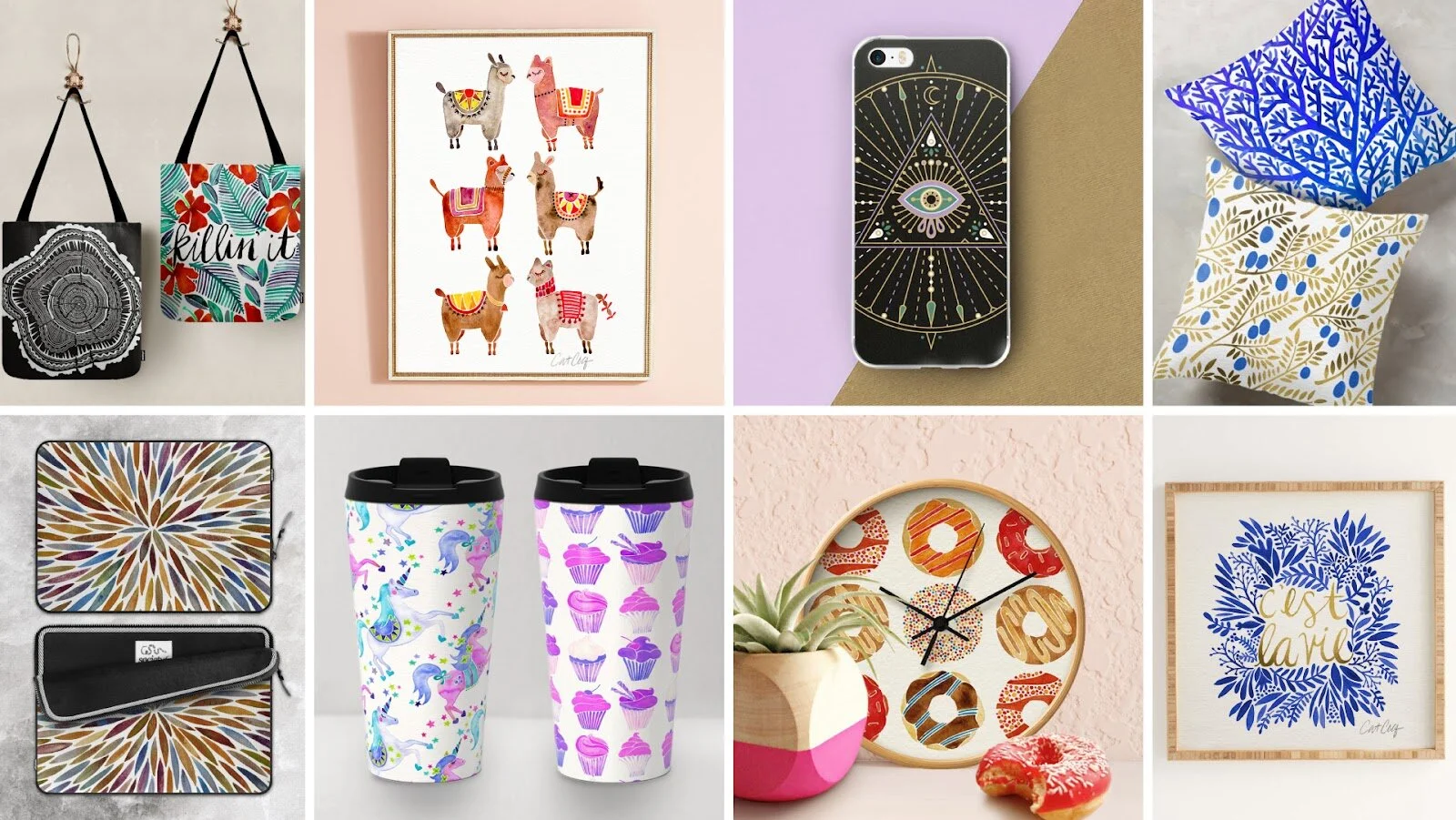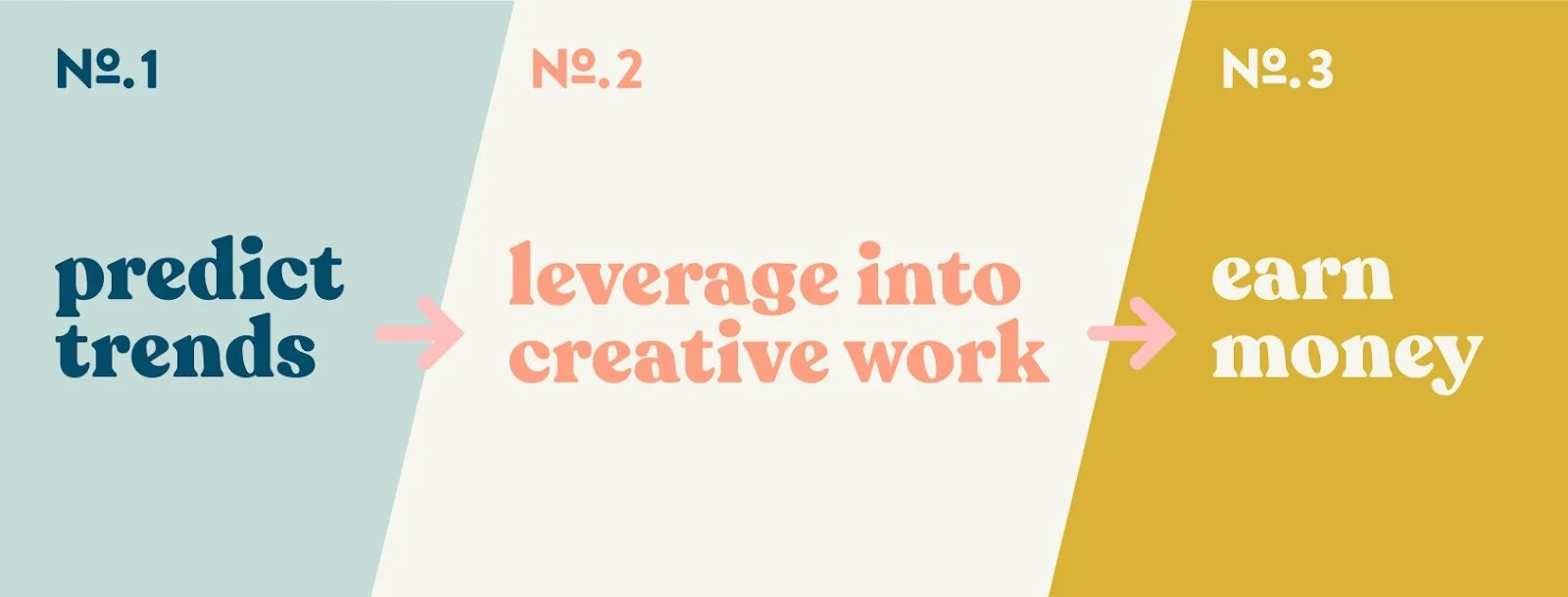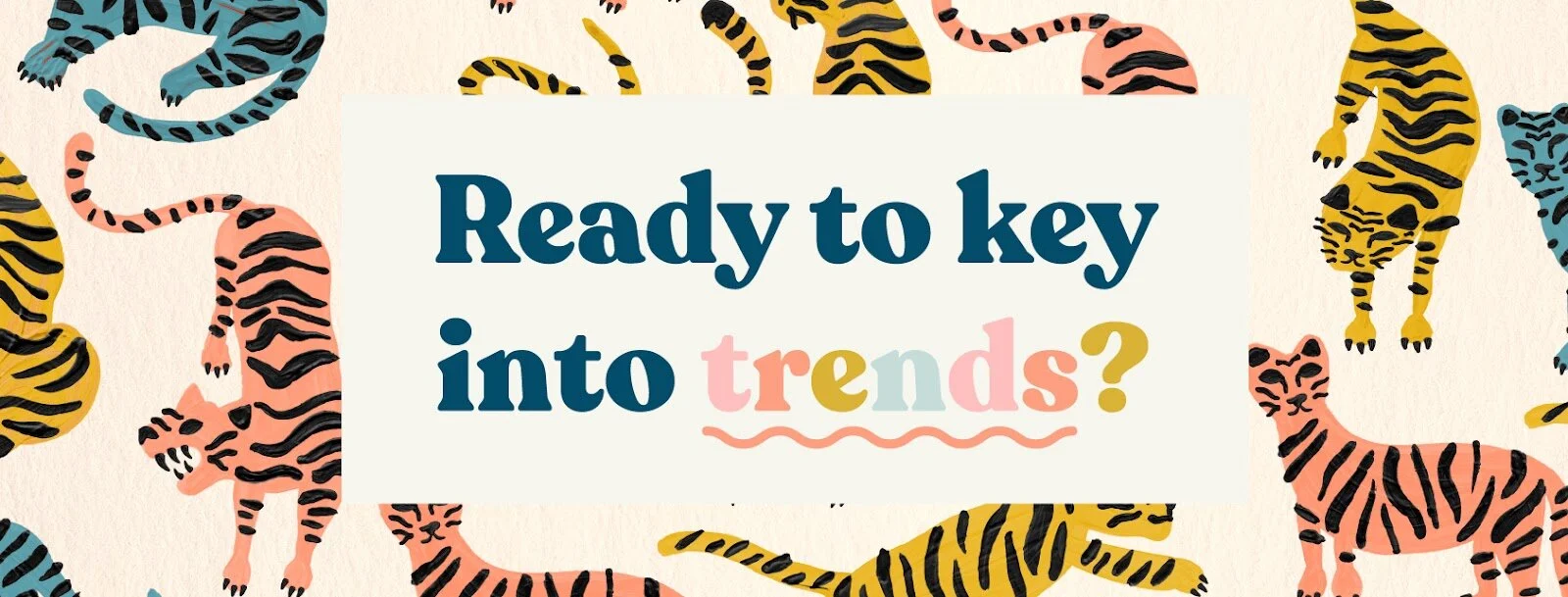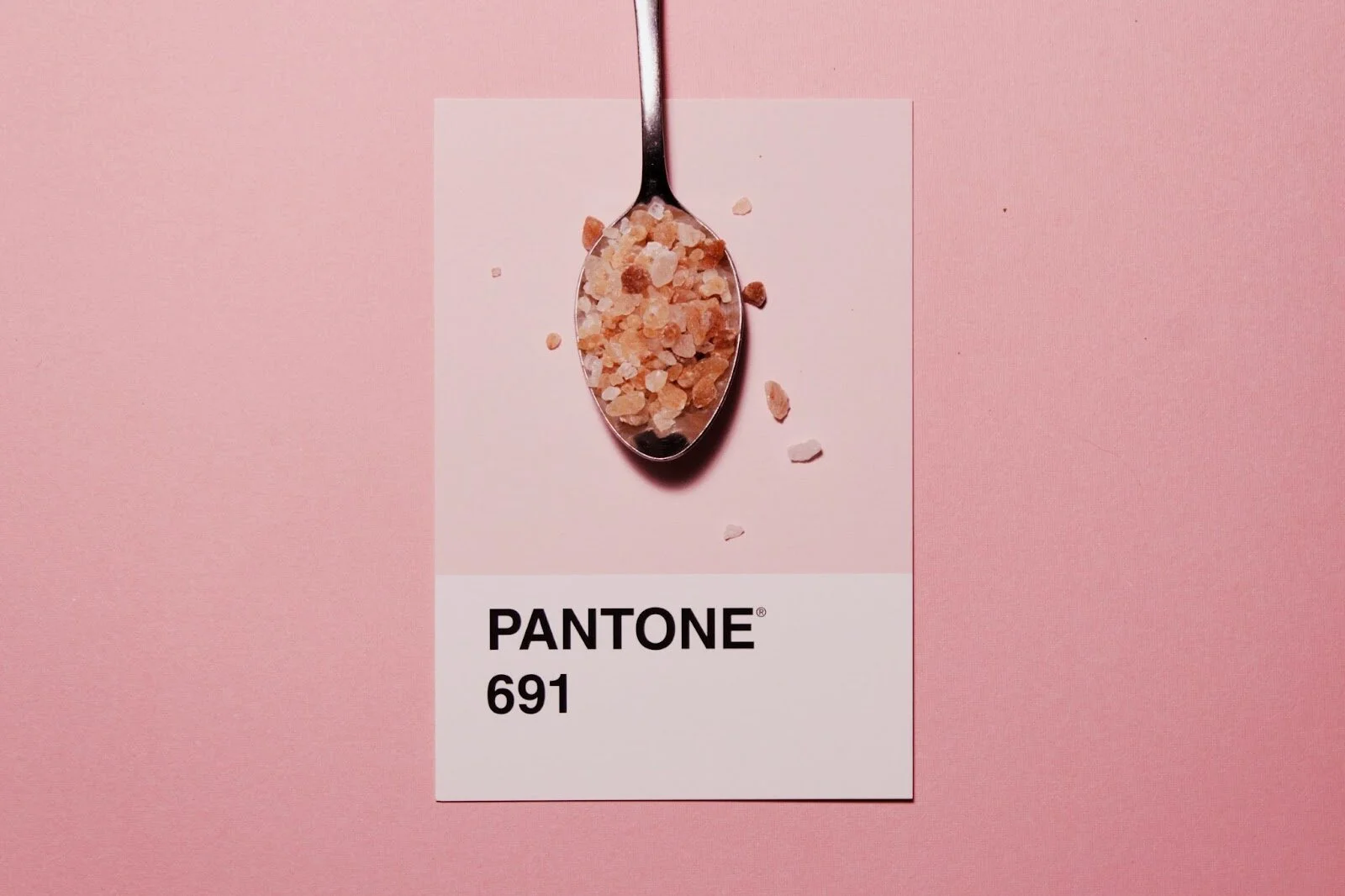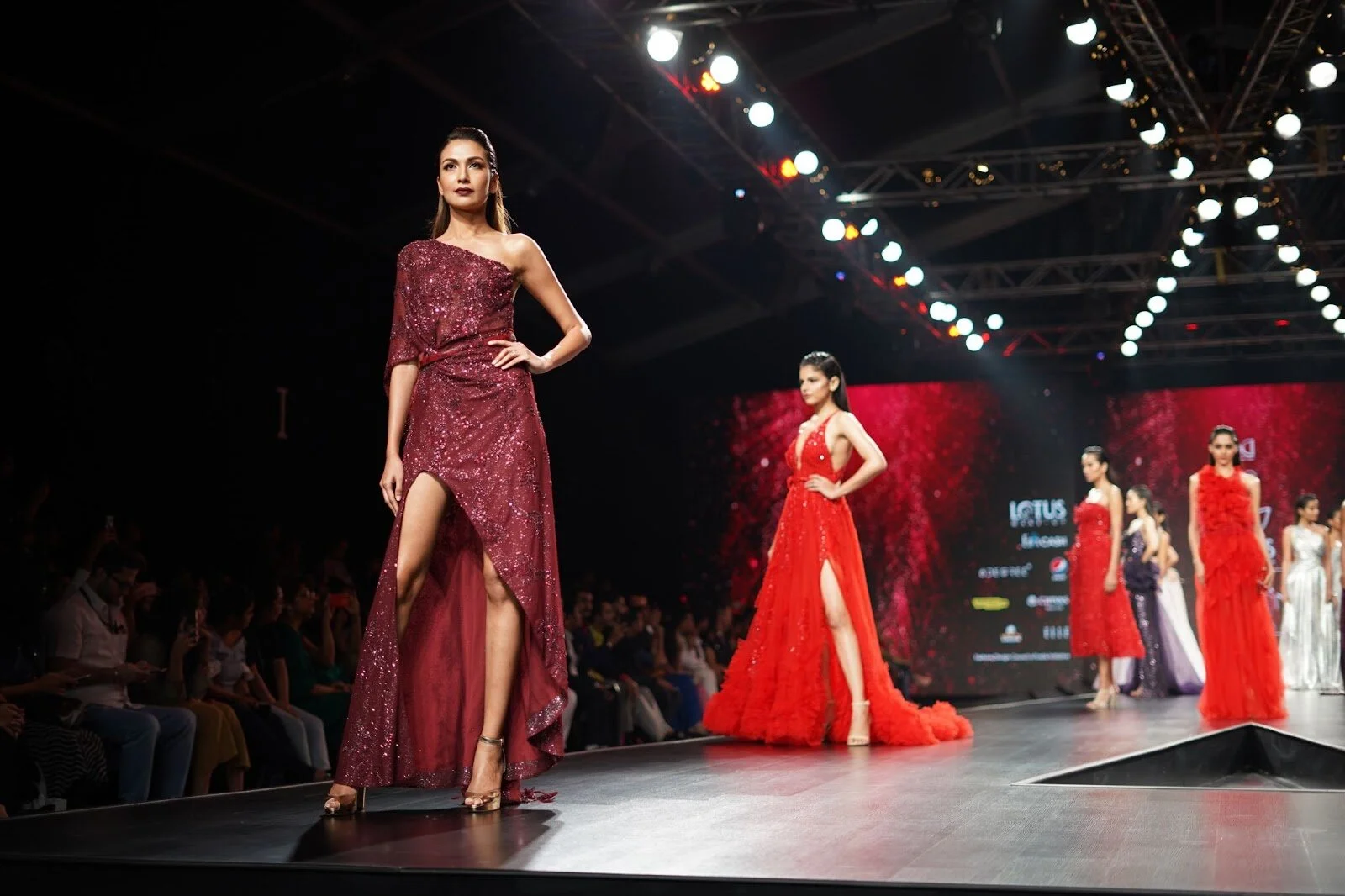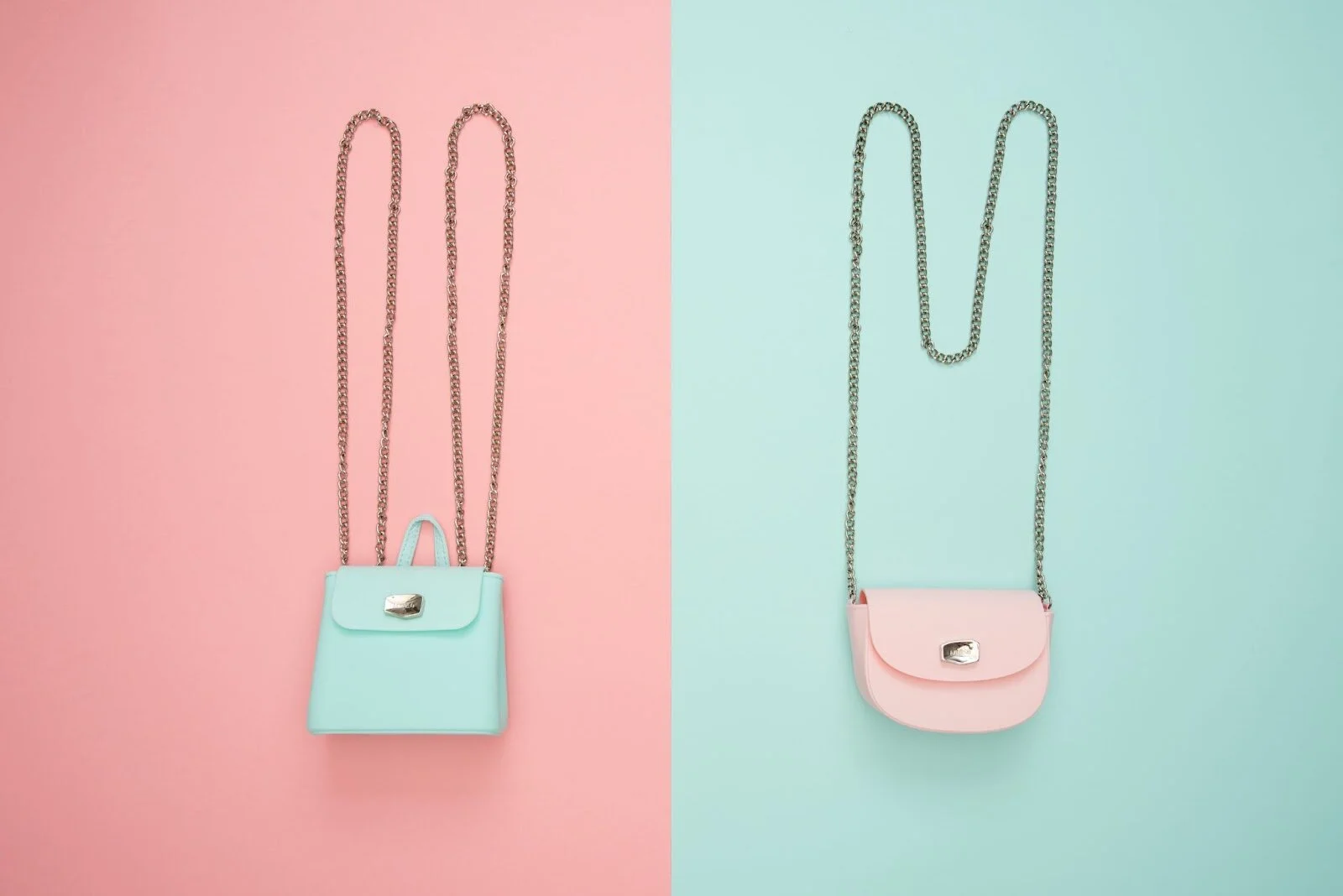Trend Forecasting for Visual Creatives
I've been licensing my artwork since 2014 and have sold over 1,000,000 products with my designs on them. The reason I've been able to sell so much of my artwork? Trend forecasting.
I have learned how to forecast upcoming popular trends and capitalize on them to create profitable designs with mass appeal. Keying into motifs, colors, and patterns that are rising in popularity has been the key to my success as a surface designer.
In this tutorial, I'll share my tried and true secrets for uncovering upcoming trends.
Once you unlock the skill of trend tracking, you'll be able to produce art that will rise to the cream of the crop. Trend forecasting will help you grow your audience, make more money as an artist, and establish your brand as an authority in the industry. Plus it is a great way to build your portfolio with motifs that you might not have considered otherwise.
Before we dive into the meat of this tutorial, I want to let you know that if you're more of a visual learner, I have an entire class dedicated to the topic of Trend Forecasting.
Why Trends Matter:
Trends affect every industry. Art, photography, web design, graphic design, fashion, product design, lifestyle, home decor, and many more. These are just some of the visually creative industries, but consumer trends affect industries outside of this realm as well. This is why it's vital to have a solid understanding of consumer trends. It will be key to helping you succeed in business no matter what your niche is.
If you want to find success in your industry, the best way to do that is to learn how to tap into what will have mass appeal to your audience. More people loving your products or artwork means more sales, more customers, and more audience members.
The Lifecycle of a Trend:
Whether you think you're a trend follower or not, we all make purchasing decisions based on trends. Let's take the fashion industry for example. Even if someone buys their clothes from a discount clothing retailer and doesn't think that they are a "fashion-y" type of person, it's very likely that their clothing has still been influenced by the fashion world.
The reason for that is that trends follow a lifecycle. The thing that makes trends so lucrative for brands and businesses, is that they almost always end up being mass-produced. But they don't start out that way. Let's take a look at the lifecycle of trends so you can see just how important it is to discover new trends early.
A trend is born:
Trends are first introduced on a small scale by innovators and influencers. At first, they're purchased in small quantities at high price points. This makes sense because a good chunk of new trends are introduced on the runway by the fashion powerhouses.
When a trend is introduced, other brands start to catch on and offer it as well so that they stay relevant and appeal to their customers. This is when the trend lifecycle starts to move into its second phase.
Mass production:
After trends are introduced and start to gain traction, they eventually become a hot ticket item. Every consumer wants to enjoy this trend, so the big box retailers start to capitalize on it. The trend then goes from being produced in small quantities at high price points, to being produced in mass quantities at moderate price points so it is more accessible to the everyday consumer.
Trend plateau:
After a while, the trend starts to feel mundane and oversaturated. Everyone has seen it, and it no longer feels innovative and exciting.
Decline:
After they've plateaued, trends start to decline in popularity. There are some exceptions like things that we would consider "classics" that never go out of style. However, these types of trends are few and far between, so it's important to always be looking ahead to the next trends.
If you are able to catch trends right as they are born, you'll have a much higher chance of profiting from that particular trend. Once it's been mass-produced, it's harder to stand out in a saturated marketplace. The goal is to catch onto new trends as early as possible for best results.
How to Predict Trends:
But how do you predict trends before they become popular? The most effective strategy for trend tracking is to look for patterns.
Looking for patterns and tracking trends doesn't have to feel like work. It can seem like it might be a daunting task at first, but it actually is really fun! The way that I stay on top of tracking trends is by following my favorite brands and blogs and keeping an eye on the new content or products that they come out with.
From there, you need to be observant and absorb as much as possible from those industry leaders' content. Then start to look for patterns. I don't mean visual patterns like chevron or ikat. I'm talking about pinpointing similarities among these different sources of inspiration to identify upcoming trends.
Look for color palettes that start popping up over and over again. Take note of any textures, fabrics, or patterns that you're seeing. Look for similar motifs as well. Once you start keying into these things and taking a deeper look at some of your favorite brands and accounts, you'll start to notice these patterns super easily. All it takes is a little practice and observation!
Suggested Brands, Artists, and Blogs to Follow:
Here are some of my absolute favorite brands, blogs, designers, and creatives that help me key into what's relevant right now and what trends are about to explode in popularity.
Instagram:
First, I want to share some of my favorite accounts on Instagram. You know I'm all about community over competition, and I love following these creatives for inspiration and insight.
Fashion:
I also track fashion on Instagram because fashion is one of the key indicators of upcoming trends. I especially keep an eye out for pivotal moments in the fashion industry that trigger big trend changes like Fashion Week in New York, Paris, or London. I want to see what's on the runway right now since that will affect what trends we see over the next few years. I also track fashion through publications and blogs.
One of my favorite fashion brands to follow is Vogue. Like most fashion powerhouses, Vogue has an entire section of their website dedicated to emerging trends. They're an industry leader in trend tracking in the fashion industry, so I love to keep an eye on their predictions.
General Trend Tracking:
While keeping an eye on the fashion world and other visual-centric trends is vital for trend tracking, I also like to keep an eye out for emerging trends and ideas in other industries as well. This is where TED comes into play. It's a platform for spreading ideas in the form of short powerful talks. The topics range from tech, entertainment, design, global issues, art, entrepreneurship, and more. This is a great resource for finding out about emerging trends across multiple industries.
Design Blogs to Follow:
Here are some of my favorite design sites to follow. On these sites, you can see what other designers and creatives are making and keep track of design trends. They're also a great source of inspiration and full of resources for visual creatives.
These are just a few brands, blogs, and resources that I follow, but there are so many more out there that you can check out. I would encourage you to explore some of your favorites and build on this list with brands and people you love to keep up with. For example, I love keeping an eye on Anthropologie and Target Fashion since they are influential brands with mass appeal, which I also personally love.
Visual Trend Pillars:
Lastly, I want to go over some of the key pillars of visual trends that you should keep an eye out for when you're looking for patterns.
If you want a deeper dive into these topics and even more tips and resources I cover them in more detail in my class, How to Discover Profitable Design Trends Before Anyone Else.
In this class, you'll get all of my resources for trend tracking with these specific visual trend pillars, and a step-by-step guide for how to track each one.
I hope this tutorial has empowered you to start to explore upcoming trends in your artwork or creative business. If you have any questions, just drop them in the comments below and I'll be sure to answer them! Happy trend tracking!
